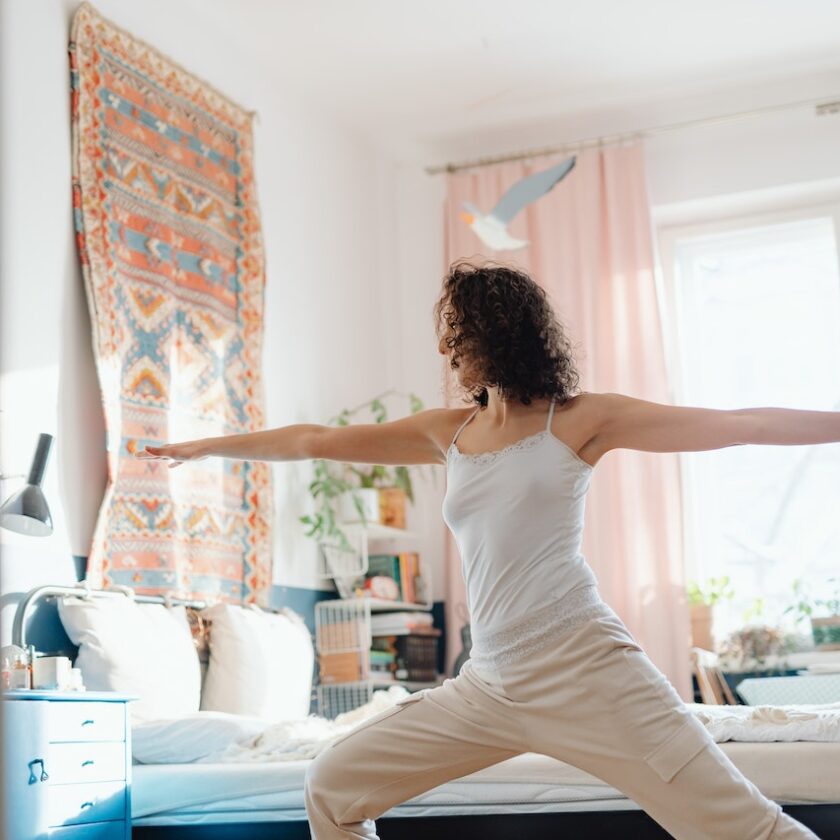Incorporating meditation into your home design process can create a serene and harmonious living space that promotes relaxation, mindfulness, and overall well-being. If you intentionally integrate elements that support meditation and make small changes, you can establish a peaceful sanctuary within your home.
This article explores various strategies and considerations for incorporating meditation into your home design, allowing you to cultivate a tranquil environment that nurtures your practice.
Designating a Meditation Space
Creating a designated meditation space within your home sets the foundation for a consistent meditation practice. Whether it’s a spare room, a cozy nook, or even a secluded corner, choose an area that offers privacy and tranquillity. This dedicated space acts as a visual reminder and a physical sanctuary, helping you establish a routine and a sense of focus for your meditation practice.
When designing your designated meditation space, consider incorporating elements such as comfortable cushions, soft lighting, and personal mementos that resonate with your spiritual journey, further enhancing the tranquil and sacred nature of your dedicated meditation area.

Incorporate Specific Meditation Practices
When incorporating specific meditation practices into your home design, it’s essential to consider various techniques that align with your needs. There are various meditation techniques available to explore, each with its unique approaches and benefits.
Mindfulness meditation cultivates present-moment awareness, while loving-kindness meditation focuses on developing compassion and empathy. Breath awareness meditation centres around conscious breathing and guided visualization and use imagery for relaxation and mental clarity.
Another type is Transcendental Meditation or TM. If you wonder “what is TM“, it is a widely practised method known for its effectiveness in promoting deep relaxation and inner calm. TM utilizes the repetition of a mantra to facilitate a meditative state.
Once you discover the simplicity and benefits of TM, such as stress reduction, clarity, and overall well-being, it can provide a valuable addition to your meditation practice and the overall design of your home.
Prioritizing Natural Light and Views
Natural light and views of nature can greatly enhance the meditation experience. When designing your home, consider placing your meditation space in windows or incorporating skylights to maximize the intake of natural light. This connection to the outdoors can provide a calming effect and inspire a deeper sense of mindfulness.
Additionally, if possible, position your meditation space in a way that offers views of natural elements such as trees, gardens, or a serene landscape. Wall panels can be extremely beneficial as they can be designed to enhance visual appeal and tranquillity in your meditation space. They can be customized to incorporate elements of nature, add texture, introduce calming colours, and contribute to a peaceful and harmonious environment conducive to meditation. They can be quite practical too as they improve acoustics and provide insulation, which can further enhance the quality of your meditation experience.

Creating a Soothing Color Palette
The choice of colours in your home design can significantly impact the ambience and mood of your meditation space. Opt for a soothing colour palette that promotes relaxation and tranquillity. Soft and muted tones like blues, greens, and earthy neutrals create a sense of calmness and harmony.
Avoid loud or vibrant colours that may distract or disturb your focus during meditation. By intentionally selecting a calming colour palette for your meditation space, you can create a serene ambience that encourages a sense of inner peace and facilitates a deeper meditation experience.
Incorporating Mindful Décor Elements
Selecting mindful décor elements can further enhance your meditation space. Minimalism often aligns well with a meditative atmosphere, promoting simplicity and reducing visual clutter.
Introduce items that hold personal meaning or evoke a sense of peace, such as inspirational artwork, statues, or natural elements like stones and plants. Each element should contribute to a sense of serenity and foster a peaceful state of mind.
Embracing Serene Textures and Materials
Textures and materials within your home design can evoke a sense of tranquillity and tactile comfort. Incorporate soft and cozy fabrics like plush cushions, throws, and rugs to create a comfortable meditation spot.
Natural materials such as wood, bamboo, or sustainable fibres contribute to a connection with nature and provide a grounding presence in your meditation space. These natural materials also bring a tactile experience, adding depth and warmth to your meditation space, while embracing sustainability in your home design choices.
Integrating Ambient Sounds and Music
Sound plays a vital role in setting the atmosphere for meditation. Consider incorporating ambient sounds or soothing music into your home design. Wind chimes, gentle water features, or even a designated space for playing soft instrumental music can contribute to a serene and peaceful environment. Experiment with different sounds to find what resonates best with your meditation practice.
Incorporating meditation into your home design process can create a harmonious and nurturing environment that supports your practice and overall well-being. By designating a specific meditation space, prioritizing natural light, choosing a soothing colour palette, and incorporating mindful décor elements, you can create an atmosphere conducive to mindfulness and relaxation.
As you embark on designing your home, remember to prioritize creating a space that nurtures and supports your meditation practice, allowing you to cultivate a sense of calm and mindfulness in your everyday life.





